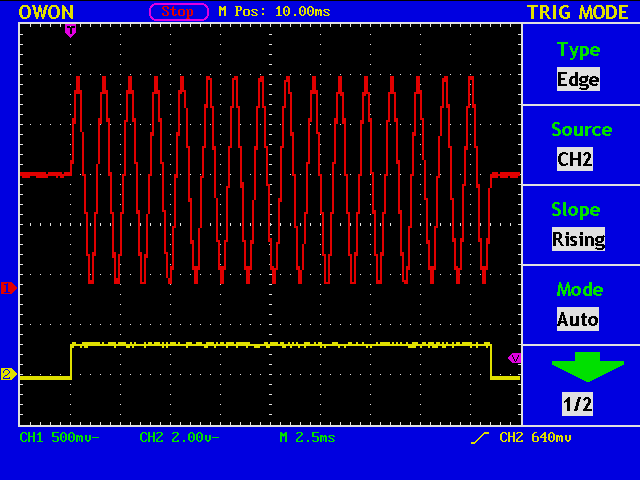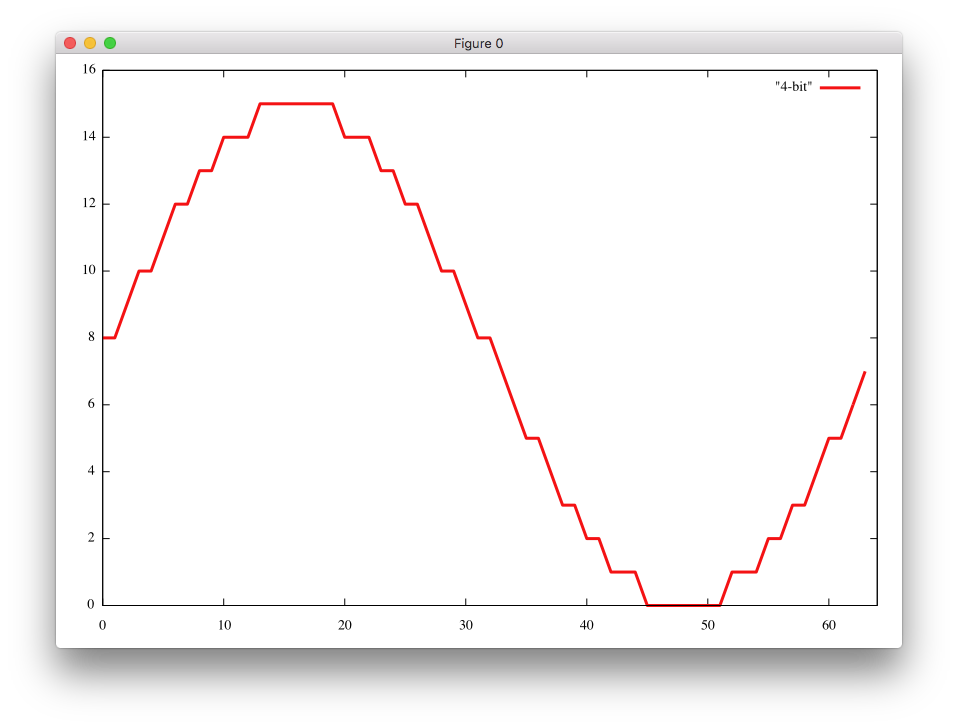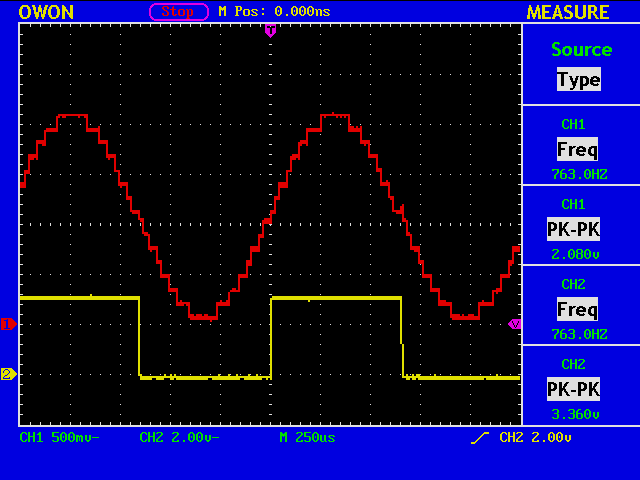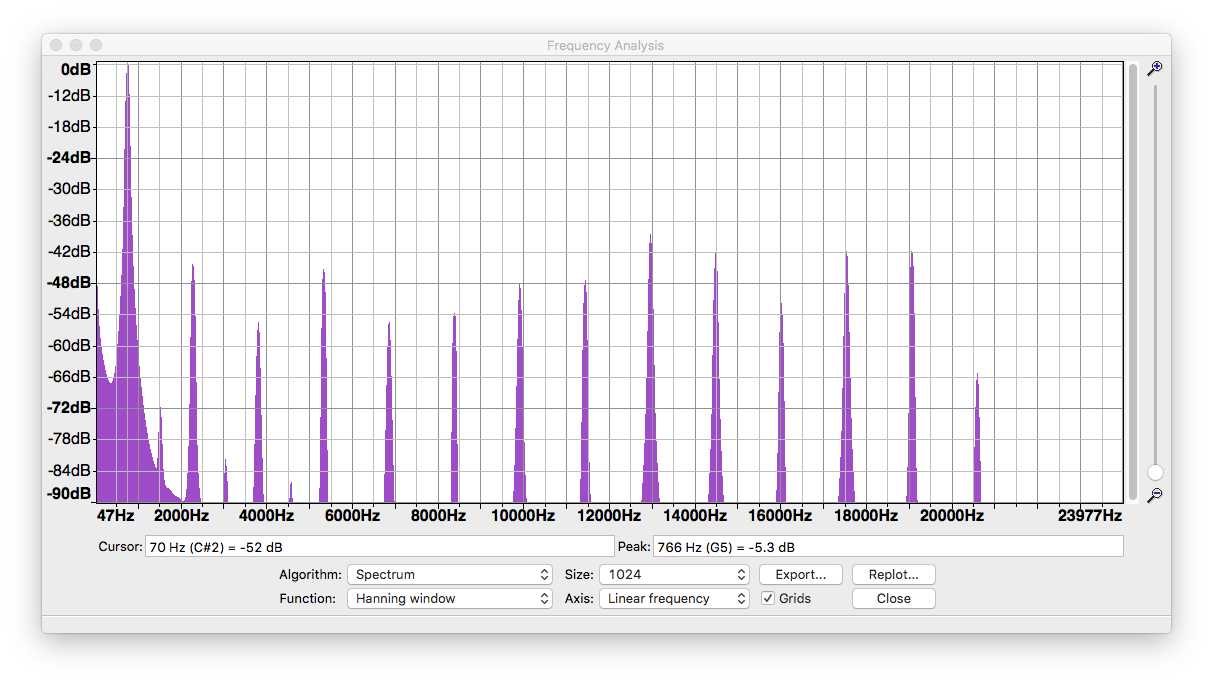A four element D/A converter is used for generating a sidetone signal. The yellow trace shows the key output, now sending a dot. Note that the phase of the sinusoid is nicely aligned with the key output.
I wrote a short C program to obtain a sine table.
int main(){
int n=64;
char buf[16], buf2[16];
for(int i=0;i<n;i++) {
int ival = (sin((double)i/(double)n*360.0/360.0*2.0*3.14159265)+1.0)/2.0*15.0+0.5;
itoa(i,buf,2,6);
itoa(ival,buf2,2,4);
printf("6'b%6s: begin WAVE <= 4'b%4s; end // %2d: %2d \n", buf, buf2, i, ival);
}
return 0;
}
The printed lines are like this and can be included into a verilog source file.
6'b000000: begin WAVE <= 4'b1000; end // 0: 8 6'b000001: begin WAVE <= 4'b1000; end // 1: 8 6'b000010: begin WAVE <= 4'b1001; end // 2: 9 6'b000011: begin WAVE <= 4'b1010; end // 3: 10 // 6'b111111: begin WAVE <= 4'b0111; end // 63: 7
The interval [0 deg, 360 deg] is divided into 64 sections to utilise all the available output levels of a 4-bit converter.
The sidetone signal is analog captured and analysed with FFT.




